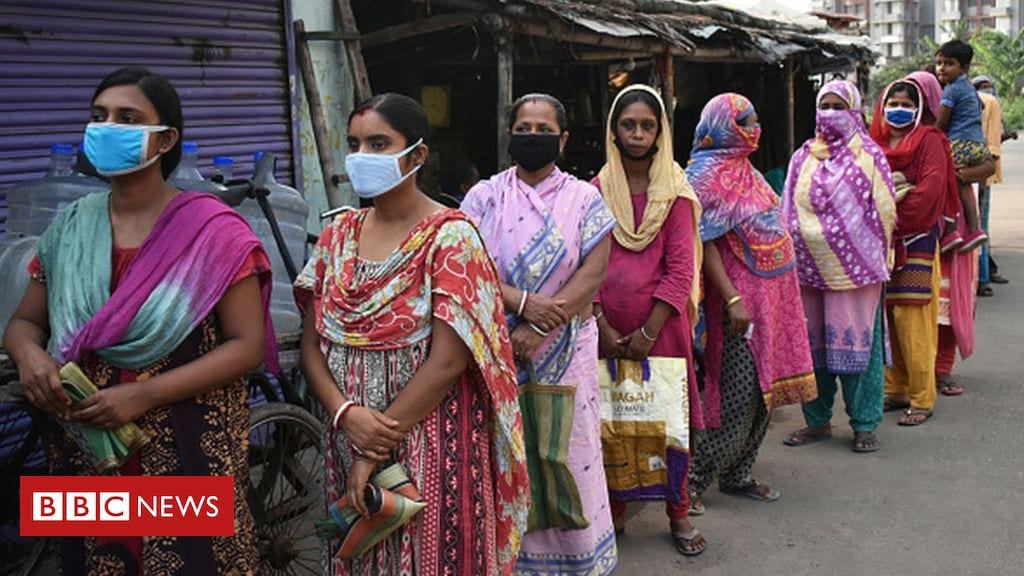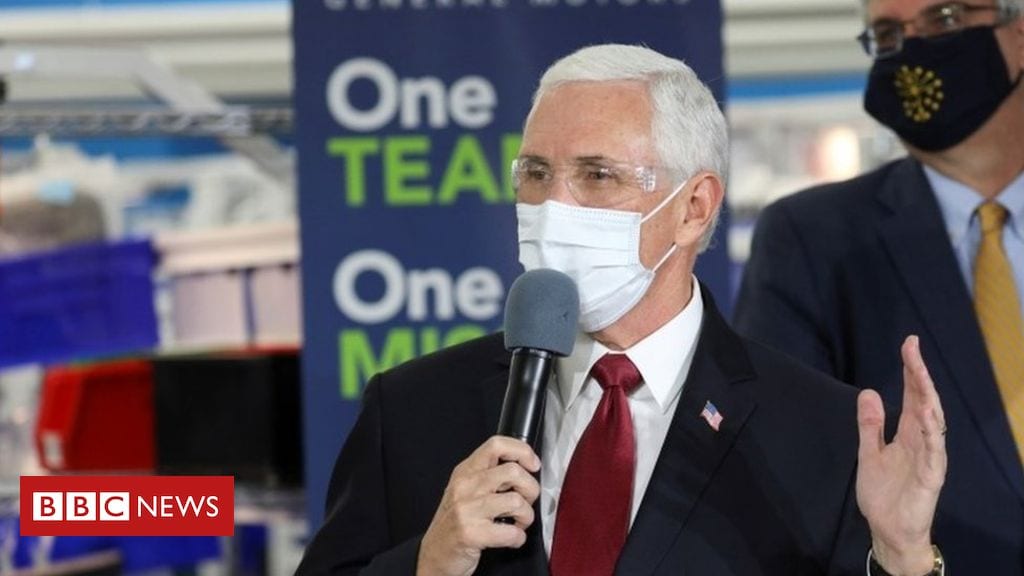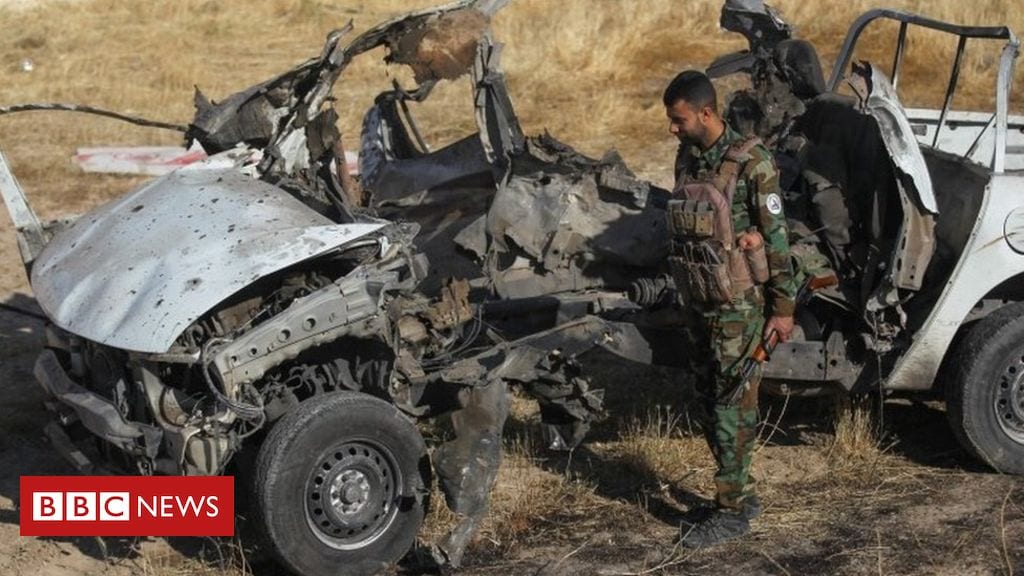[ad_1]
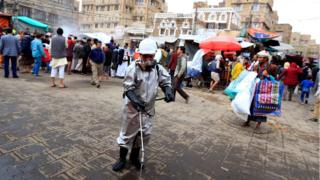
Image copyright
AFP
Social distancing advice is not being heeded in places like markets
Yemen’s health system is in a state of collapse – leaving it unlikely to be able to cope with an outbreak of coronavirus.
Dr Shalal Hasel is a hardworking official from the Department of Epidemiological Surveillance in the Yemeni province of Lahj. Usually his job focuses on dealing with outbreaks of cholera but now he’s working round the clock to make sure Yemen is preparing properly for Covid-19.
Although – at 30 – he’s young and energetic, he’s already sounding despondent.
“You’ll know about the deteriorating health situation in Yemen – especially after conflict and war. Hospitals here are limited and not equipped to receive coronavirus cases.”
To prove his point, he’s sent me some pictures of doctors in rather flimsy looking aprons and rudimentary masks.
“We lack adequate PPE (personal protection equipment). Rapid response teams have received training in Covid-19 case management but they do not possess personal protection. The WHO [World Health Organization] must fill this void.”
Image copyright
Dr Shalal Hasel
Dr Shalal Hasel (left) is worried about the shortage of medical supplies
The WHO is helping to equip and staff 37 so-called “isolation centres” in Yemen for coronavirus patients.
Some of these are existing health facilities that have been re-purposed and others are old buildings turned into makeshift hospitals. But here too there are other shortages, according to Dr Hasel.
“We don’t have enough infra-red temperature measuring devices; there’s a shortage of swabs for diagnosis and even the surveillance teams in the area do not have an ambulance to use for any suspected cases.”
‘Fear in the faces’
Figures from the WHO show there are just four labs for the whole country that do coronavirus testing. A fifth is due to come online soon.
Mohamed Alshamaa from Save The Children is equally apprehensive about what may hit the country’s hospitals – only half of which are operational due to fighting.
“You can see the fear in the faces of not just the doctors but the management too. We have some doctors in one or two hospitals who have sent away normal respiratory patients fearing they are coronavirus cases because they do not have the right protective equipment.”
Yemen currently has only 208 ventilators; another 417 are supposed to be on their way. It’s a long way short of the many thousands being gathered or manufactured by developed countries.
Tamuna Sabadze, from the International Rescue Committee, says the most likely scenario suggests that at least 18,000 intensive care beds will be needed. “And even if you get a ventilator you cannot run one if you don’t have power – there’s often no generator or, if there is one, no fuel to run it.”
Crowded places
So far Yemen has been lucky – there’s only been a handful of cases.
The first was in the southern province of Hadramawt. Five more have since been confirmed in Aden, according to the emergency committee set up to oversee the pandemic.
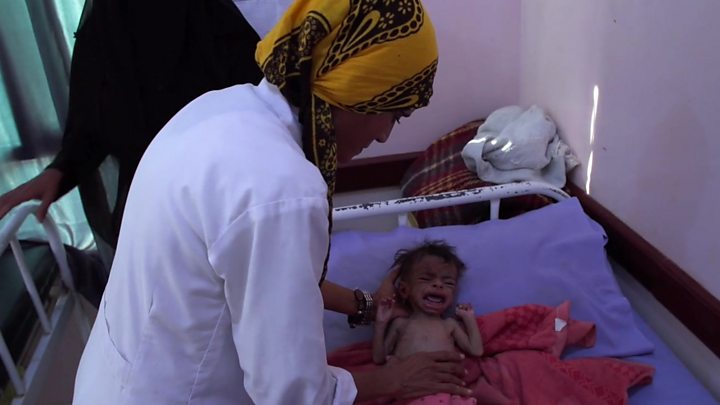
Media playback is unsupported on your device
The WHO says all the necessary contact-tracing took place. A total of 177 people were alerted – including 36 deemed high risk. But none of the experts expect it to end there.
Aside from the lack of equipment, there’s the worry about public health awareness – or rather a lack of it.
With government weakened through war, there aren’t the strong preventative messages put out by the authorities as in other countries.
Much of it is cultural, argues Dr Hasel.
“Yemenis hang around in crowds and our markets – especially the khat [a popular herbal stimulant] markets – are full and the streets are narrow. Even health facilities are crowded with people.
“All of this hinders the application of social distancing.”
Image copyright
AFP
Yemen’s health service is in a state of collapse
Then there’s the problem of porous borders, he adds.
“Yemen has many African immigrants here illegally and they pose a risk to public health if they are not being examined or monitored. There are also Yemeni expatriates in neighbouring countries who are smuggled back and forth across the border. They carry risks too.
“Maybe one of them has coronavirus and then mixes with the general public and no-one knows about it.”
One of the things Tamuna Sabadze at the International Rescue Committee has been focusing on is the restoration of sanitation facilities and the distribution of hygiene kits.
Image copyright
AFP
Floods recently compounded Yemen’s public health crisis
“It’s all very well to say ‘wash your hands!’ but that’s not easy in Yemen. Fifty per cent of the population don’t have access to running water.”
Shortly after we speak bad floods hit Aden which makes the task of providing clean water even harder.
‘No-one can go to hospital’
Back at the Saana office of Save The Children, Mohammed Alsamaa is worried about the supplies and personnel shut out of the country since Yemen’s airspace closed in mid-March.
Mohammed’s staff are short of three humanitarian workers who were inadvertently kept out.
He’s also worried about food supplies being disrupted by the shutdown measures. This is already a country where malnutrition is rife.
Image copyright
Reuters
In some places it is too dangerous to venture outside because of the war
Amid the fear of contagion, there was a glimmer of hope in April when a unilateral ceasefire was announced by the Saudi-led coalition fighting Houthi rebels in Yemen.
It’s now been extended for another month but the rebels have still not accepted it and Mohammed tells me that fighting carries on under the surface.
“There is still tension everywhere. It is more urgent than ever that the conflict stops. No-one can go to hospital or a clinic if there’s war going on and this outbreak – when it comes – could be unspeakable.”



